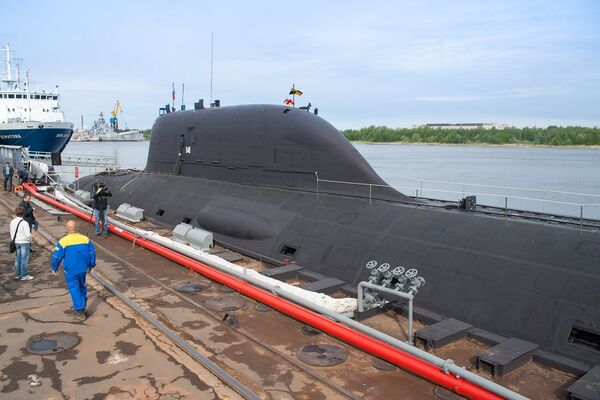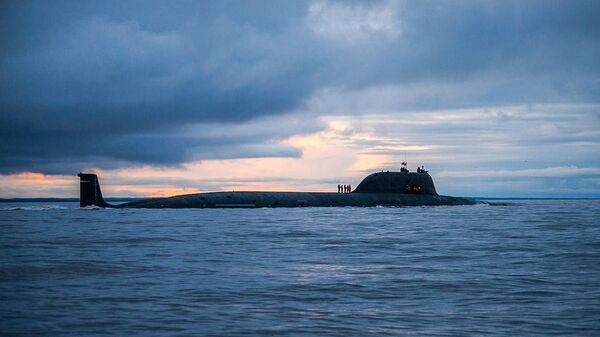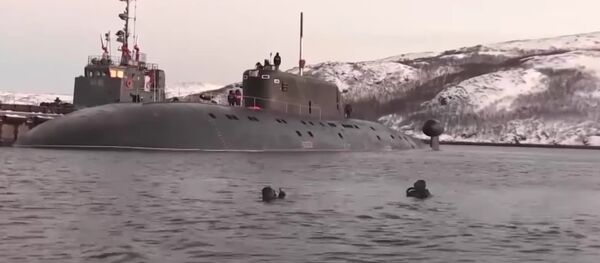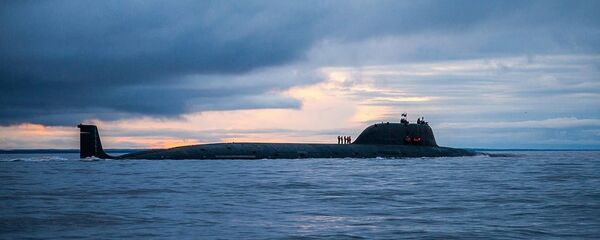Speaking to the newspaper, Yevgeni Toporov, the chief designer at the Rubin Design Bureau, the legendary Russian center of submarine design, said that the construction of the civilian nuclear sub is expected to start three years from now, in 2020.
The unique project, yet to be named, is designed to help maritime geologists engage in seismic surveying across wide areas of the sea and ocean floors. The sub is expected to simplify the search for reserves of hydrocarbons and other minerals, and to provide highly valuable information to the Russian Navy. Furthermore, one of its main tasks will be to scout out locations for the construction of underwater objects.
The military, for its part, is expected to use the seismic data obtained to determine the optimal positions for its underwater drones and other systems. Finally, the sub may be deployed along the bottom of the world's oceans to monitor foreign vessels as part of the 'Project Harmony' maritime surveillance system.
Rubin's Yevgeni Toporov told Izvestia that the new sub will be built using one of Russia's military nuclear submarine designs, which will be modified to accommodate the seismic surveying sub's unique equipment needs.
Paraphrasing Toporov, Izvestia explained that "the most important [modifications] is the sub's special seismic sensor wings, which in their idle state will be hidden between the outer and inner hulls of the submarine, in its bow and stern sections. In working position, they open, like fins, forming a giant scanning surface area covering several hundred square meters." When in operation, the onboard sensors will be able to scan several dozen meters beneath the sea floor.
The absence of weapons systems onboard the sub is expected to reduce the seismic scanner's cost about 60 percent compared to an ordinary nuclear-powered combat submarine. The vessel is expected to have a crew of 40, a displacement of no more than 14,000 metric tons (corresponding to the military-designated Yasen-class attack sub), and a sea-based endurance time of 90 days. It will also be capable of diving to up to 400 meters below the sea or ocean surface, which is also the working depth of most Russian combat subs.

"First of all, this has to do with the exploration of underwater areas," Baranets said. "After all, there are many strategic facilities under water: oil and gas pipelines and communication lines, including government ones," for instance.
"Furthermore, such a sub could conduct underwater geological exploration," the observer noted. "For us this is extremely important in areas like the Arctic, for example."
As far as the detection of oil and gas reserves is concerned, Baranets noted that it cannot be excluded that Rubin's new sub may be used to drill and take samples from the bottom of the ocean floor.
That said, Baranets added that "this vessel will allow us to conduct studies of underwater currents, climate change in a particular oceanic region. This is extremely important for [maritime] maps and even for the operation of combat submarines, because our nuclear and diesel subs do not carry out such [surveying] functions themselves, relying on the data of hydrographic services that has been created over the decades."
Ultimately, Baranets emphasized that the planned construction of the new seismic surveying sub could not come at a better or more important time. "We shouldn't forget that ahead of us is renewed work on the Northern Sea Route. This is a crucial economic artery, where it is necessary to ensure the safety of navigation. A submarine that will work in this region will bring many benefits in ensuring the safety of the passage of ships," the expert concluded.







